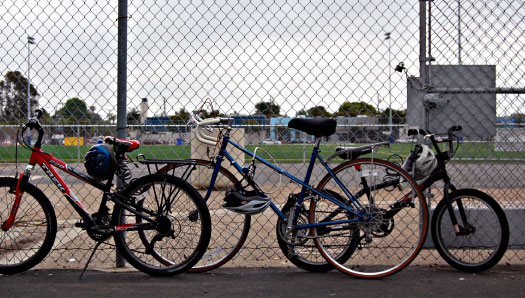Video: Rocky Mountain PBS
Text: Alexis Pancrazi, Blueprint America
With fall in the air and back-to-school commercials in full swing, here at Blueprint America we were reminded by our colleagues at Rocky Mountain PBS in Colorado about the potential of a kids program picking up pace across the country: “Safe Routes to School.”
Safe Routes, the result of a 2005 transportation bill that set aside federal money to promote biking programs, focuses on transforming the way kids get to school — by encouraging them to get out of the backseat and onto their feet. This might mean putting in streets signs and bike lanes across communities nationwide in order to carve out safe bike and pedestrian-friendly routes. In Phoenix, schools handed out maps that denote the safest pathways. In Elmhurst, Illinois, one school created a reward system with prizes for when students walk or bike a certain number of days. Other schools have added a complementary education element, to teach kids the rules of bike safety and the language of the road.
For many, this program is about shaking up our sedentary lifestyle. As America transformed into a 2 or 3 cars-per-household country in the past half-century, the percentage of kids walking or biking to school dropped from being half in 1969 to being less than 15 percent today. In conjunction, reports show that the rate of obesity in children has become three times more prevalent in the last 30 years. Our kids today will be the first generation in 200 years to have generally poorer health and shorter life spans than their parents.
So far, bike programs have yielded some tangible success. The school in Elmhurst has a consistent 80-95 percent involvement (depending on weather). Another school in Jackson, Michigan, reported seeing the number of students walking to school double in three years.
Don’t forget, taking the kids to school by car consistently clogs up the morning commute, adding up to as much as 21 percent of congestion. If we could eliminate most of those cars every day, just imagine how great an impact it could have on our oil consumption and our exhaust output, as well as our gridlock. It may seem minuscule in the day-to-day, but those 15 minute drives to school add up. As we pile into the car each morning anxious about running late and whether everyone’s homework is in tow, it’s easy to forget the long-term effects driving everywhere has on our health, our environment and our communities.
Catch a glimpse of the program in action in Colorado:



